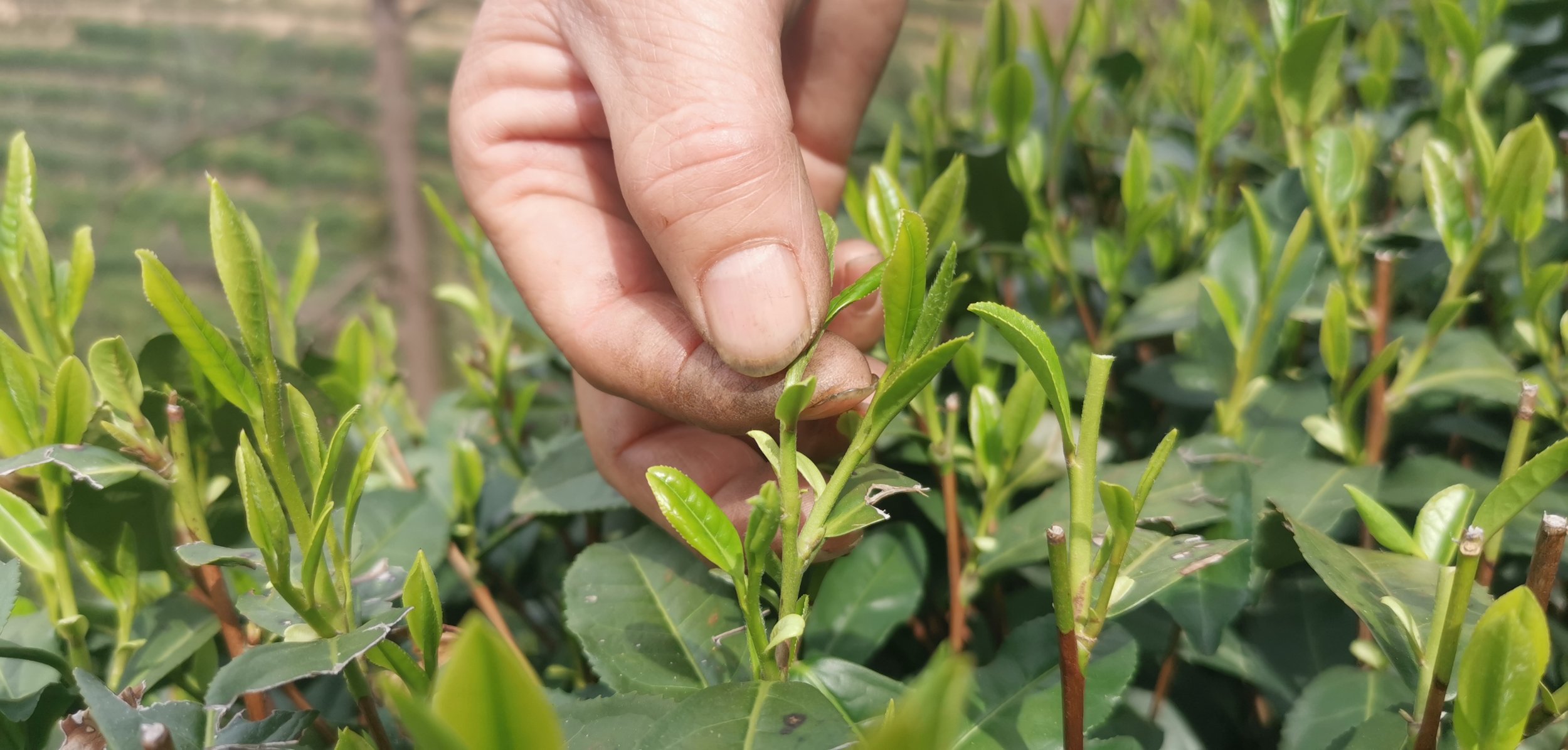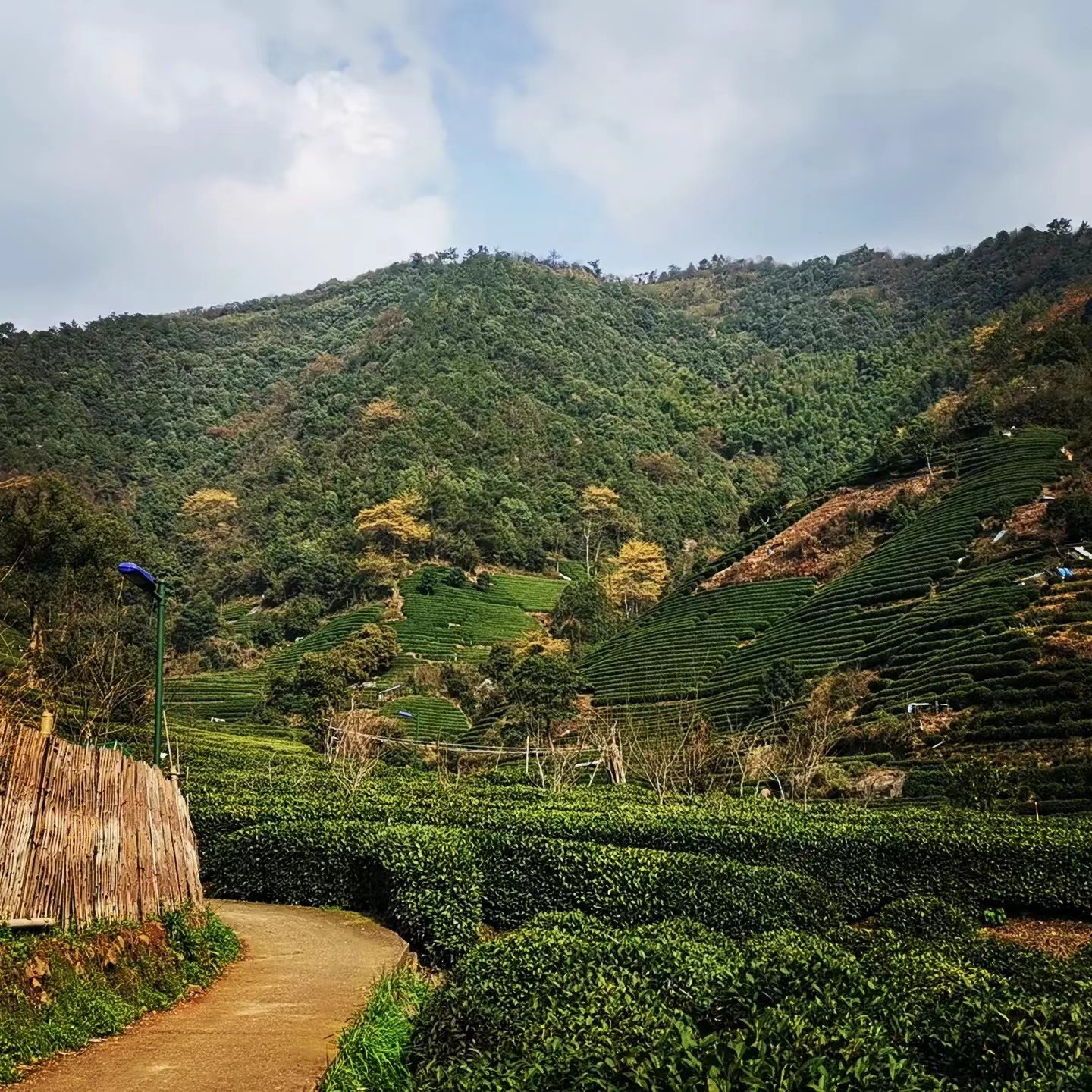West Lake Dragonwell - Old Tree Grade B
West Lake Dragonwell - Old Tree Grade B
Easily one of the most renowned teas in China, Dragonwell (Pre-Qing Ming Longjing 明前龍井) from the West Lake (Xi Hu) protected area has a recorded history going back over a thousand years. The unique microclimate and pure spring water running into the tea fields help to create one of the richest and cleanest brews available in the tea world. We were lucky to get our hands on a very small amount of this premium and highly sought after tea. The Qunti cultivar is the original cultivar from which Dragonwell was historically made. It is said to have more body and feeling, while newer cultivars, particularly Longjing #43, emphasize aroma and smoothness.
The brewed tea is thick and especially sweet, with a classically robust nutty and vegetal character. Compared the A grade Dragonwell from this year, the B lot is actually sweeter but with slightly less complexity. It is full bodied and has a subtle but distinct mineral texture, and highly potent energy. The flavor itself is all candied nuts, tender spring veggies, and soft florals. All Dragonwell is pan-fried in order to halt oxidation, giving it its distinct flattened leaves and uniquely nutty character.
Origin - Xi Hu, Zhejiang, China
Location - Skywell Mountain, Dongmuwu Village
Harvest - March 30th - April 5th, 2022
Cultivar- Lao Chashu Quntizhong
Tea Maker - Jin GuanQuan
Tastes Like - Candied Chestnuts, Snow Peas, Violets
Sold in one ounce increments
Cultivar Name
Qunti Longjing (群体龙井) or Lao Cha Shu Qunti Zhong (老茶树群体种) Longjing (龙井) literally means "Old tea tree group species." Alternate names include Soil/Earth tea “tu cha” 土茶, Old Style Longjing “lao longjing” 老龙井, or as called by the locals “lao cha peng” (老茶蓬).
West Lake (西湖) Tea Region
Dongmuwu (东穆坞村) is a village producing high quality Longjing tea (西湖龙井) in the West Lake “Xi Hu” (西湖) Nature Preserve area. It is surrounded by mountains on three sides, notably Dama Mountain (大马山) to the east, Zhugan Mountain (竹竿山) as the barrier to the south which is the highest mountain, and Jiuqu Mountain (九曲岭) to the east. Going further southeast leads to Meijiawu (梅家坞) which are the mountains connecting to Dongmuwu’s mountains. Tianzhu Mountain (天竺) and Lingyin (灵隐) are also notable tea-growing places in the area. Tang Dynasty poet Lu Yu (陆羽), who wrote the famous Cha Jing “Classic of Tea” (茶经), had acknowledged Tianzhu and Lingyin for the quality of their tea. Dongmuwu is rich in high quality tea and is a prized producing area of West Lake Longjing tea.
Longjing Tea Picking Standards
1. Ensure the freshness and tenderness of the tea leaves 保证茶叶的新鲜和嫩度
Longjing tea is picked when it is most tender. The freshness of picking is divided into “liannxin” (莲心), “queshe” (雀舌), and “qiqiang” (旗枪). These are the grades set for tea leaves when picking tea in ancient China, and could be called “special grade,” “first grade,” and “second grade.” The lianxin (莲心) (literally, “lotus heart”) “special grade” refers to the earliest batch of new tea collected every spring. It is completely composed of a single bud in appearance, and its shape and size are similar to the heart of a lotus seed. The qiqiang (旗枪) (literally, “flagged spear”) is like a "lianxin” (莲心) after a certain amount of growth, with young leaves and buds resembling a spear (枪). But in appearance, it is still dominated by buds, and the “spear” qiang (枪) is bigger than the “flag” qi (旗). If the qi (旗) is bigger than qiang (枪), the two leaves are like a bird's beak, and the small bud in the middle is like a tongue. This is called “sparrow’s tongue” queshe (雀舌). Our Longjing Grade B is Lianxin Pre-Qing Ming Qunti Longjing.
2. Pick the tea early 趁早采摘
Longjing spring tea has strong seasonality. Among them, pre-Qing Ming tea (明前茶) and Yu Qian “before grain rain” teas (雨前茶) are the highest quality West Lake Longjing teas. Yu Qian tea refers to teas harvested after the Qing Ming Festival but prior to the “Grain Rain” Gu Yu (6th solar term, April 20). The tea must be picked as soon as possible before the Grain Rain. Usually, it is picked in March when the medium-sized tea leaves are just showing a few buds - that is, one bud and one leaf are picked, once a day or every other day, until the beginning of summer.
3. Sustainable tea leaf picking 留叶采摘
In order to protect the ecological environment of the tea garden and foster the continuous growth of tea trees, farmers pay close attention to the picking method when picking tea. When picking spring tea and autumn tea in the West Lake Longjing tea area, the fetal leaves of the tea trees are preserved. When picking summer tea, the farmers keep the lateral leaves. In this way, there is no conflict between tea tree picking and tea tree maintenance, and the continuous growth of tea leaves in that year can be achieved.
4. Tea leaf picking methods 讲究采法
In order to ensure the quality of tea leaves, the leaves cannot be directly pinched with fingers, because their traces will directly affect the appearance of tea leaves. In ancient China, tea dedicated to Chinese emperors was reportedly picked by the lips of unmarried tea pickers. Of course, this method is no longer used, and the modern way of picking tea trees is to pick the tea buds with the palm of the hands facing down, pinching the buds with the thumbs. This also doesn't create sprains, and keeps the tea bushes clean.
Production Of Longjing Tea 龙井茶的生产
1. Withering 晾晒
West Lake Longjing needs to be dried on a bamboo sieve after picking. This usually takes half a day, and can reduce the grassy taste and remove the moisture in the tea leaves to meet the requirements of frying. After that, the dried tea leaves are roughly classified. According to the quality of the leaves, the conditions such as the pot temperature and strength of the next frying are determined. After being spread, the dry, fresh leaves are sieved into three grades of "large, medium, and small," and they are fried in different pots using different frying gestures.
2. Kneading 揉捻
External force is used to knead the internal structure of the tea leaves into the proper shape. The shape of Longjing tea requires the green leaves to retain part of their original, natural shape. So that the shape of the leaves can be observed, the kneading process is not as strong as in other teas.
3. Frying 炒制
The frying of West Lake Longjing needs to be done by hand, and the usual techniques include the ten methods of "shaking” yao 摇, “belting” dai 带, “squeezing” ji 挤, “throwing” pao 抛, “pushing” tui 推, “expanding” kuo 扩, “buckling” kou 扣, “grasping” zhua 抓, “pressing” ya 压, and “grinding” mo 磨. The whole process of frying tea is divided into three stages: First-panning (青锅), Cooling (回潮), and final-panning (辉锅). First frying: The tea leaves are preliminarily formed into a flat shape and the tea leaves are roasted to about 80% dry, taking about 15 minutes. This initial frying “fixes” the leaves and inactivates any oxidative enzymes. Cooling: It takes about an hour for the tea from the previous step to cool, reabsorb moisture, and soften in the bamboo trays. Final-panning: The rejuvenated tea leaves are added to the pot and pan roasted to dry. The water content in the pot is reduced by 5% to further set the shape. This takes about 20 minutes. Finally, the tea leaves are cooled and dried again to obtain the final Longjing finished product.









